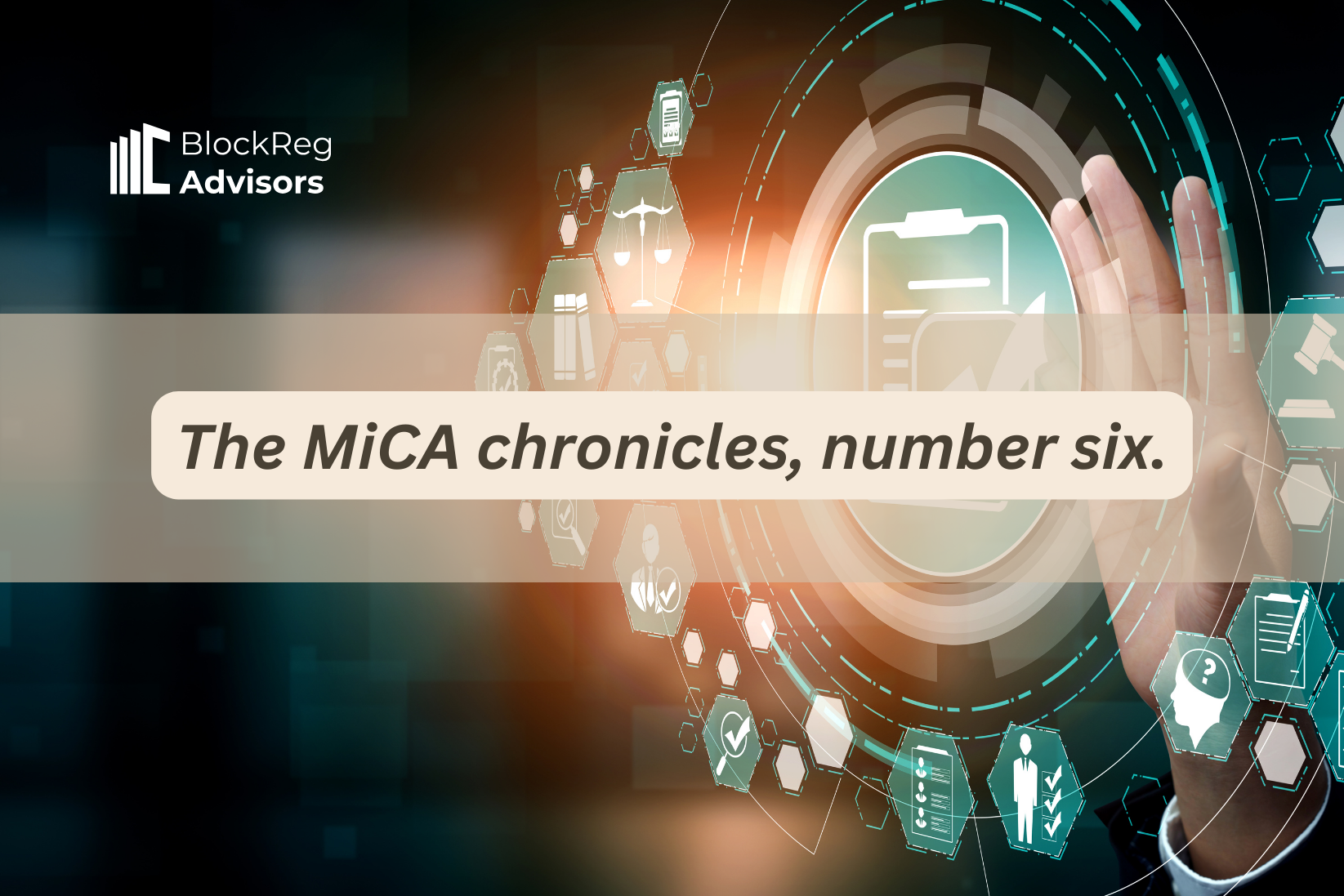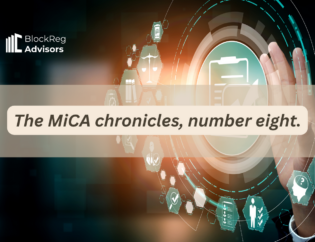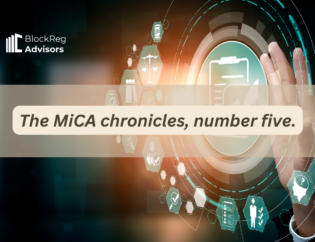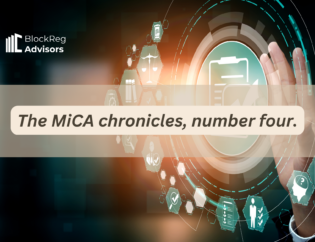

Admission to trading
“Christmas is coming, and Bitcoin is up again. Alas, what a resistance! Maybe there is a store-of-value argument there, somewhere, after all. Who knows. Anyhow, if the narrative goes right one more time, and the signs are that the narrative will be right, one more time, after the rise in price of Bitcoin comes the rise in price of Ethereum, and after that… alt-season, baby! Oh yeah, time to surf the wave, and enjoy the ride in prices of the tokens bought and held during this difficult time of bear market. I just can’t wait for it! 2024 is going to be the year.”
This paragraph is a speculative transcription of what’s going on in the mind of every crypto investor around this time. Everyone that has been paying attention to the crypto market knows how things should work now that the Bitcoin halving is approaching. Some tokens have gone, others remain, and many others are there to be imagined, devised, produced, and issued. Of course, what makes these tokens valuable is their attractiveness as commercial objects, that is: their potential for investment. The more potential the market sees in a token, the bigger the hype (justified or not) shall be, and the more likely it is for people to want to buy the token. Demand will soar, and probably price will.
If the token is admitted to trading, of course.
A lot of what makes crypto-assets valuable is, more than their utility, their tradable features. A lot of it is speculative, yes, although more and more of the use-cases for tokens (particularly in decentralized finance or DeFi) are gaining traction. The ability to trade crypto at every time, weekends included, together with the access to retail investors and the easiness in exchanging value in a matter of minutes makes crypto markets very dynamic creatures where kings (moon!) and devils (rekt!) can happen at any time. One of the most profitable forms of business in crypto is to operate a crypto trading platform with an exchange, in which it is possible to negotiate on the price of tokens and trade some tokens for others. Trading platforms are very powerful players and dependent on the tokens they admit to trade.
With MiCA, there are new rules for admitting tokens to trading in trading platforms (a form of crypto asset service provider in MiCA) that operate in the EU. Forget the contractual model in which a token issuer could make a deal with an exchange (in “exchange” for some fee or tokens) for launching the token. If MiCA’s rules on admission to trading are not complied with, national competent authorities may request that the exchange service provider to stop trading the token and apply administrative sanctions to the exchange.
So, what does a trading platform has to comply with? First, it cannot admit to trading asset-reference tokens (ARTs) nor e-money tokens (EMTs) if the tokens’ white papers have not been approved by national competent authorities. Second, it cannot admit to trading crypto assets that are neither ARTs nor EMTs (let’s call them, for the sake of simplicity, general tokens or GTs) if such the tokens’ issuers have not complied with the terms of article 5 of MiCA (issuing a white paper according to MiCA, notifying the white paper according to MiCA, publishing the white paper and all necessary communications according to MiCA, and acting with necessary due diligence, according to… MiCA, once again). In the case of GTs, the operator of the trading platform may be responsible for complying with these rules, in case a white paper has not been published, and in case the issuer and the operator of the trading platform agree to do so.
What about tokens that are not “regulated” by MiCA – in other words, tokens excluded from MiCA’s application (as the ones referred to in “whereas” numbers 10-12, 17, 22, 26, 27)? Well, if the token is a security token, then legislation on security issuance and admission to trading applies. If the token is any of the other categories of crypto assets excluded from the application of MiCA, in principle no legal requirements apply to their admission to trading, apart from the situation described in point four below, for some cases. For example, crypto-asset service providers operating a trading platform may list non-fungible tokens (NFTs).
Fourth, and in addition to the three other points made, crypto-asset service providers operating a trading platform shall not admit to trading a token that does not comply with the rules of operating rules of the trading platform and that is not “suitable” for trading. What does it mean, being suitable for trading? According to MiCA (article 76 (2)), this means:
“(…) When assessing the suitability of a crypto-asset, the crypto-asset service providers operating a trading platform shall evaluate, in particular, the reliability of the technical solutions used and the potential association to illicit or fraudulent activities, taking into account the experience, track record and reputation of the issuer of those crypto-assets and its development team (…).”
Three notes on this. The first note is that suitability is a criterion to consider on top of the criterion for admission to trading applicable to ARTs, EMTs and GTs. The second note is that suitability may include assessing other factors that are not established in the provision above (note the “in particular” after the “shall evaluate”). In this sense, it is not only about technical reliability, potential association to illicit or fraudulent activities, experience, and reputation of the issuer: more things should be considered.
Finally, the third note concerns the final part of the provision (not transcribed above), stating that the crypto-asset service provider operating a trading platform shall also assess the suitability of certain GT tokens that are excluded from the application of GT rules on issuance and admission to trading (such as tokens offered for free, tokens automatically created as a reward for the maintenance of the distributed ledger or the validation of transactions, “utility” tokens providing access to a good or service that exists or is in operation and tokens that only grant its holder the right to use the token only in exchange for goods and services in a limited network of merchants with contractual arrangements with the offeror).
Furthermore, article 76 (3) limits crypto-asset service providers autonomy in listing privacy coins; as MiCA states: “[tokens] that have an inbuilt anonymization function unless the holders of those crypto-assets and their transaction history can be identified by the crypto-asset service providers operating a trading platform for crypto-assets.”
So, this means that assets such as Bitcoin (generated as a reward for the validation of transactions), Ethereum (proof of stake tokens are also generated as a reward for the validation of transactions…), and any other token issued through a consensus mechanism by a “fully decentralized entity” (that does not have to comply with MiCA requirements in terms of issuing) shall, in principle, have their suitability assessed by the crypto-asset service provider operating the trading platform. This means that the crypto-asset service provider shall have to assess the DLT infrastructure that supports the token, as well as the governance mechanisms of the protocol, and the role of its development team.
Suppose the exchange does not follow the suitability assessment. What happens? The problem is to know what is suitable or not. Article 76 (2) seems to indicate only reputational and technical risks shall count for the suitability assessment, it does not consider other risks (financial, environmental), but it also does not close the door to other factors to be included. In essence, and to be on the safe side, crypto-asset service providers operating a trading platform will have to be very, very careful and pragmatic when considering which tokens, they will accept in the platform. Maybe this will affect some tokens, like meme tokens, from being issued listed (bye bye, Dodge and Shiba Inu?).
What are the most immediate consequences of these rules? Firstly, that issuers of stablecoins (ARTs and EMTs) must have their white papers approved, so that exchanges operating in the EU are able to list them in their respective trading platforms. The time taken to have a white paper approved may affect the market, since stablecoins are very important for trading with other crypto assets, given their purported stability. Secondly, centralized trading platforms must also pay attention to whether a GT token is a MiCA-GT token or a MiCA-excluded GT token, to understand if they should confirm that the white paper has been published and communicated, or if it is only necessary to apply a stability assessment – or, in the case of NFTs, if not even suitability is necessary. Thirdly, tokens that are rewards of staking or mining activities (layer one tokens, for the most) and issued by decentralized protocols shall be subject to suitability assessments. It will be interesting to see if certain protocols shall be left out due to being considered unsuitable by market participants.
And what will be the impact of the rules? Exchanges are the gateway for crypto trading, and that will not change. Many crypto trading platforms are already registered as CASPs in some European jurisdiction within the EU and will therefore benefit from the delayed application of the rules, which may give enough time for issuers of EMTs and ARTs to have their tokens fully compatible with EU rules and ready to be listed. However, other tokens may not be so lucky, nor suitable to trade. It will be interesting to see how decentralized exchanges fare versus their centralized counterparts. While the fall of FTX made people wary of centralized exchanges, the way “regulated” exchanges perform under MiCA will be a key point to look out for in the future. And how current exchanges deal with listing requirements, specifically those exchanges that offer a significant diversity of assets for trading.
I notice that I say that things will be interesting to see. They will, trust me.
Note: This text is the sole work of the author and does not bind BlockReg Advisors Ltd. nor does it constitute legal advice. All rights reserved.
If you want to discuss these topics further do not hesitate in contacting our team at [email protected] and [email protected].








